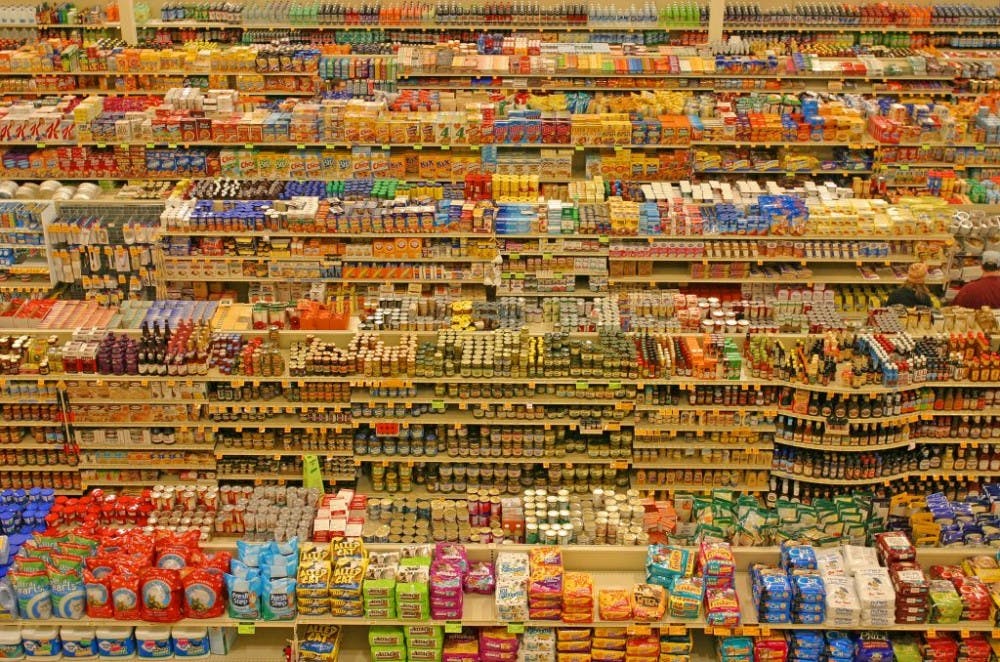Researchers at the U.S. Department of Agriculture have recently been investigating forms of food packaging other than traditional plastic wrap. One alternative they have taken particular interest in is edible, biodegradable packaging made out of casein, a milk protein. Not only is this material insensitive to light, it is up to 500 times better than plastic at keeping oxygen out of the product, according to the American Chemical Society (ACS).
“Everything is in smaller and smaller packaging, which is great for grabbing for lunch, for school, but then it generates so much waste,” Laetitia Bonnaillie, a USDA researcher who co-led the casein packaging research, said according to the ACS. “Edible packaging can be great for that.”
Bonnaillie and her team presented their work at the 252nd National Meeting and Exposition of the ACS.
Bonnaillie and other researchers are currently working on ways to make the edible packaging more nutritious and flavorful. The current method of producing the packaging consists of creating a casein film by combining mixer and commercially available casein powder.
Glycerol is added to the film to make it softer, and then citrus pectin is added to improve the structure of the film. The citrus pectin is also able to help the film withstand humidity and extreme temperatures. Further flavorings and vitamins as well as probiotics and nutraceuticals can also be added at this time. These enhancements would not have much taste, so the flavor of the product would not be compromised. Bonnaillie hopes that with the additives, the films will be more health-enhancing than edible packaging made from starches.
“The protein-based films are powerful oxygen blockers that help prevent food spoilage. When used in packaging, they could prevent food waste during distribution along the food chain,” Peggy Tomasula, research co-leader, said to the ACS.
Edible packaging made of starch is currently commercially available. Companies like Loliware have sold gelatin-based edible drinking cups for two years. Edible cupcake wrappers made of potato starch has also been introduced. However, these types of packaging are more porous than casein and allows oxygen to seep through microholes, leading to spoiled food. Casein, on the other hand, has smaller pores and can create a tighter network to keep oxygen out.
Researchers have taken particular interest in edible packaging because it is marketable to people of all ages. Packaging Digest reported that 87 percent of consumers in the developed world showed “somewhat serious” concerns about global warming.
Though much research has already been done on this new form of food packaging, it may be many years before the USDA researchers can make it widely available. The research team is currently working to create prototype film samples for a small company in Texas. Bonnaille added that if the team continues to make progress, the casein packaging could be on store shelves within three years.
One major drawback of a casein film is that it dissolves in water. Therefore to be put on the market, casein requires an additional non-dissolving plastic or cardboard container to keep the product clean and dry. Bonnaillie added, however, that most packages already come with this outer layer. Therefore, replacing the inner layer with casein film would still be beneficial for the environment.
One example of consuming a casein packaging could be a dissolving packet of dried soups. Dropping the entire pouch of powder into hot water would dissolve the entire packet, with the dissolving casein film adding additional protein to the soup.
Furthermore, there are additional uses for this protein in its liquid form. Liquid casein can be sprayed onto cereal flakes and bars. Casein could take the place of the traditional sugar coating found on cereal, helping to maintain crunch without added sugar. The protein could also be sprayed on pizza boxes to prevent grease stains. This could be particularly beneficial in the near future as the U.S. Food & Drug Administration has recently banned the perfluorinated chemicals traditionally used to coat pizza boxes.
“The coatings applications for this product are endless,” Bonnaillie said according to the American Chemical Society. “We are currently testing applications such as single-serve, edible food wrappers. For instance, individually wrapped cheese sticks use a large proportion of plastic — we would like to fix that.”





